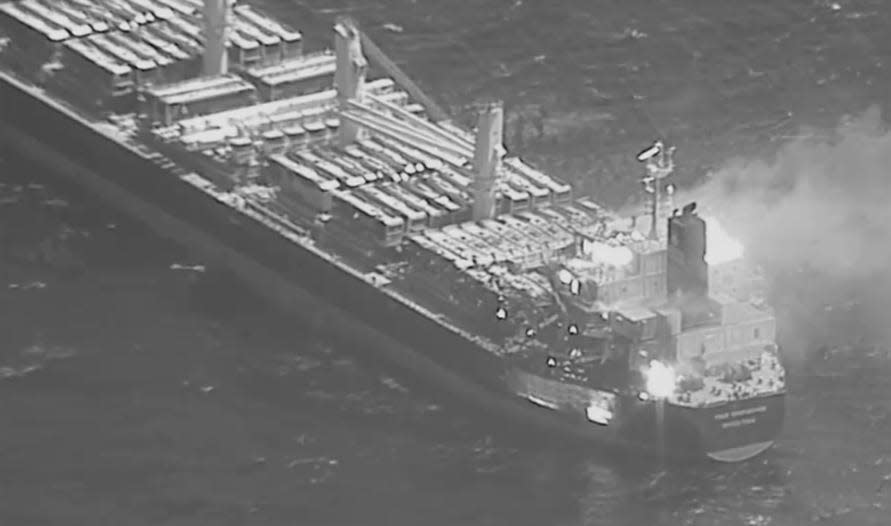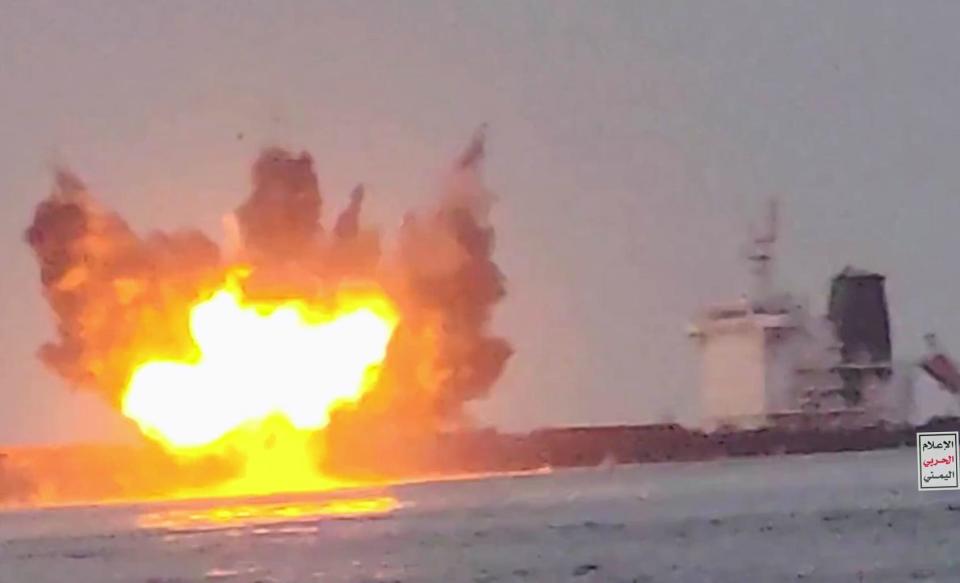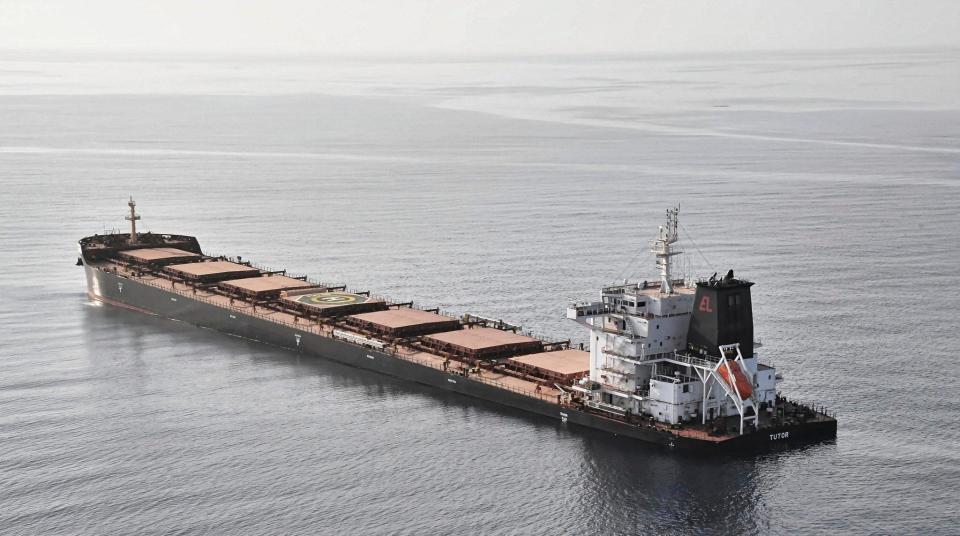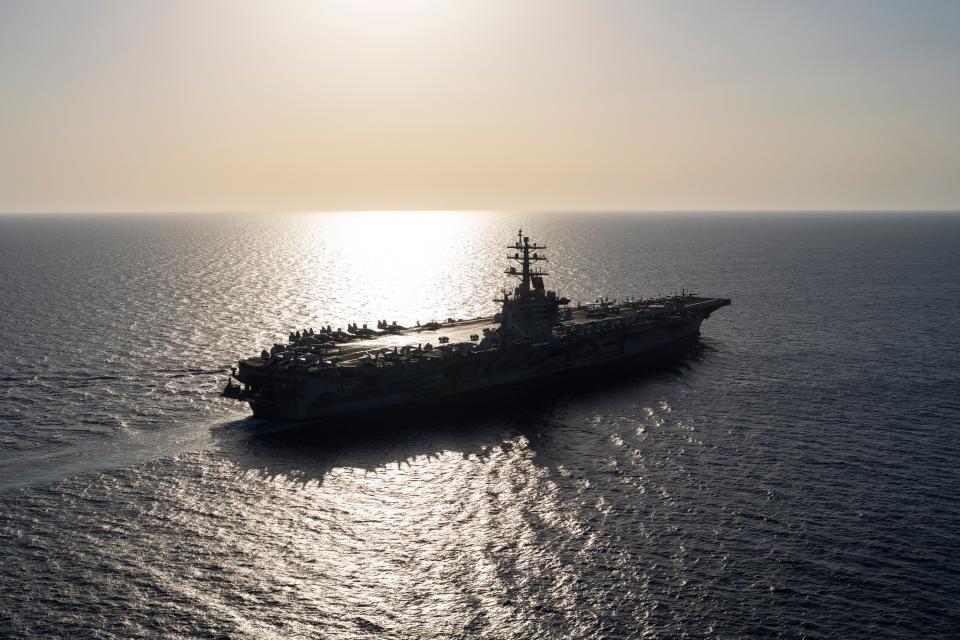The Houthis are getting smarter with their Red Sea attacks, and the ships sailing these waters are paying the price
Shipping lanes off Yemen have seen a spike in successful Houthi attacks lately.
They've hit several commercial ships in recent weeks and even sank one of them.
The Iran-backed rebels are also getting their drone boats out to sea more often.
The Houthis have scored a string of successful hits in recent weeks on commercial vessels — even sinking one of them — and demonstrated their ability to effectively strike targets with drone boats, signaling that they're getting smarter with their attacks.
Experts say these highly destructive achievements show that the Houthis are learning from their many months of regular attacks on shipping lanes in the Red Sea and Gulf of Aden and continue to receive help from Iran, their main supplier of military and financial assistance.
"They're learning, and they're getting more support," Archer Macy, a retired US Navy admiral, told Business Insider.
'A useful disguise' for the Houthis
Between December and March, Houthi attacks damaged at least 19 commercial ships, according to a June 13 report published by the Defense Intelligence Agency. Nearly all of the vessels were targeted by missiles, though some were struck by one-way attack drones.
The Houthis then lost a critical mission asset. An Iranian cargo ship suspected of providing them with targeting information and intelligence sailed home. MV Behshad spent months lingering in waters near Yemen, but it left the area in mid-April as Tehran braced for Israel to retaliate over its unprecedented attack.

The following weeks saw a decrease in the pace of successful Houthi attacks. In April and May, a total of three commercial vessels reported being struck by anti-ship ballistic missiles launched by the rebels, according to a list of incidents compiled by Military Times.
June, however, has been another story.
The Houthis started the month vowing to escalate their attacks in the wake of American and British strikes in Yemen. The rebels have since struck at least five commercial vessels, finding a level of success in their targeting similar to that of the opening months of their campaign.
Some of the incidents have also revealed dangerous new tactics. Most notably, on June 12, the Houthis struck a commercial vessel in the Red Sea with an explosive-laden drone boat for the first time since they began attacking merchant shipping in November.
Unlike the sophisticated naval drones that have taken center stage in the Ukraine war, devastating the Russian Black Sea Fleet, this crude-looking weapon was little more than a small, slow-moving craft staffed by two dummies that appeared to resemble a common fishing vessel. As such, the vessel managed to travel over 65 nautical miles across shipping lanes without being stopped.
"There's so many small boats in that stretch of water, and that's why, actually, it's so hard to stop the smuggling of missiles and drones to the Houthis as well," Brian Carter, the Salafi-Jihadism team lead and an analyst at the American Enterprise Institute's Critical Threats Project, told BI.
"You can't stop every small boat. So I do think it's a useful disguise for them," he said.

The initial drone boat attack on the commercial bulk carrier MV Tutor caused flooding and damage to the engine room. Hours later, a Houthi missile hit the ship. The double-tap strike forced the crew to abandon the vessel, and it eventually sank, becoming the second ship to do so since attacks began last fall.
The same week, the Houthis fired two anti-ship missiles, hitting the MV Verbena in the Gulf of Aden. Not even 24 hours later, the bulk cargo carrier was struck by another missile, marking the week's second double-tap strike. The ship's crew eventually abandoned the vessel due to the damage sustained by the attacks.
British security firm Ambrey said the attacks on the Tutor and Verbena, in addition to successful strikes on two other vessels in the days prior, were indicative of a "significant increase in effectiveness" of Houthi operations.
"Every single Houthi attack, the Houthis are probably learning something about what works and what doesn't," Carter said. "If you think about how a military organization operates, they're definitely taking away lessons from the different strike packages that they're using."
Double taps and drone boats
Beyond the recent double-tap strikes, the Houthis' ability to learn from past attacks is visible in their drone boat operations.
During the first few months of this year, US forces destroyed Houthi drone boats in Yemen nearly every time the rebels tried to launch them into shipping lanes. In June, though, the rebels managed to get well over a dozen drone boats into the water — far more than they had in any previous month.
And their ability to do so is what ultimately led to the catastrophic attack on the Tutor.

Experts say the uptick in drone boat attacks points to the Houthis' ability to react to US strikes in Yemen and adjust their operations accordingly.
That could mean better hiding them or picking more efficient launch sites. It also suggests that the rebels could now have a larger supply of such weapons, awarding them more opportunities to launch and thus leading to a greater chance that they'll eventually hit something.
"I think it's more likely they've got more of them, so they're more willing to use them," said Macy, now a senior associate at the Center for Strategic and International Studies' Missile Defense Project. "They're not such precious objects, and they've probably just gotten better at it."
It's unclear what all the Houthi drone boats look like, but the small fishing craft that struck the Tutor is an inexpensive, readily available vessel that can be modified into a weapon.
It is difficult to not only prevent the rebels from obtaining their "low-tech, low-cost" means of attack and to deter them from launching attacks, Alex Stark, an associate policy researcher who covers Middle East security at the RAND Corporation, told BI.
These attacks are an "ongoing problem without an obvious or useful solution at hand," she added.

White House National Security Council spokesperson John Kirby acknowledged this week that the Houthis have been more successful in their recent targeting, though he pointed out that a majority of their attacks have still failed.
US and coalition naval forces are routinely tasked with destroying Houthi missiles and drones — both before and after launch — and many of these threats have landed in the water.
"They miss a whole hell of a lot more than they hit," Kirby told reporters on Wednesday.
He said the US will continue to "degrade their capabilities" — which American forces are said to be doing through the consistent strikes in Yemen — but cautioned that the Houthis are still getting supplied and resourced by Iran, which has been the case for years.
"The Houthis, who have no greater or lesser desire than they did six months ago, have been given more capability and are getting more support in doing so," Macy said.

Recent Houthi successes come amid changes in the American naval presence in the region. The Dwight D. Eisenhower Carrier Strike Group, which spent more than seven months battling the rebels, recently left the Red Sea, but it will soon be replaced by the Theodore Roosevelt Carrier Strike Group.
US officials have warned that the conflict has no signs of slowing down, and the growing financial toll has raised questions about the long-term sustainability of the counter-Houthi mission.
Experts say that despite the material effects of the Houthi campaign, which has caused disruptions to a key global shipping route, the rebels are still eager to use their attacks to boost their messaging and legitimacy. The Houthis characterize their campaign as a response to the Israel-Hamas war, but they are also attempting to position themselves as a big player in Iran's proxy network.
"I think they have discovered that this tactic is quite successful for them and very difficult to deter," Stark said.
Broader regional de-escalation might be the only way to sustainably address the problem, but that may not permanently solve it, she said. "I don't think the Houthis would be willing to cease these kinds of attacks forever."
Read the original article on Business Insider

